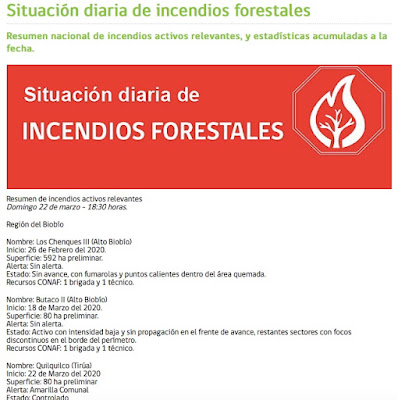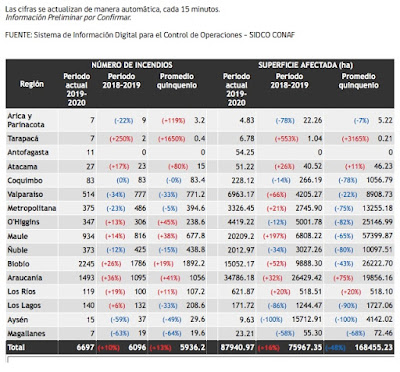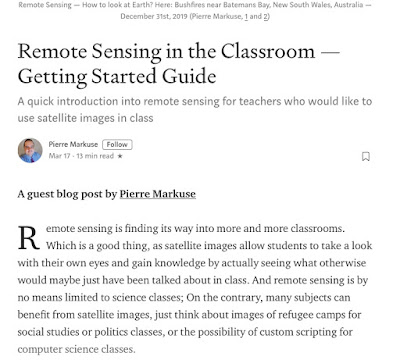Evaluation of the potential relationship between Particulate Matter (PM) pollution and COVID-19 infection spread in Italy
Leer
"INTRODUCTION
To date, several scientific studies focused on viruses diffusion among humans demonstrated that increased incidence of infection is related to airborne particulate matter (PM) concentration levels [1,2]. It is known that PM fractions (e.g., PM2.5 and PM10) serve as carrier for several chemical and biologic pollutants, viruses included.
Viruses may be adsorbed through coagulation onto particulate matter composed by solid and/or liquid particles whose lifetime into the atmosphere is hours, days or weeks.
Particles and adsorbed biologic pollutants may be subjected to diffusion into the atmosphere and transport, also at long distances (long-range transport). PM also represents a substrate allowing long term persistence of viruses into the atmosphere, hours or days.
Viral inactivation depends on selected environmental parameters: if on the one hand both high temperature and solar radiation are able to speed up the inactivation rate, on the other hand high relative humidity may promote the diffusion rate [3].
Recently published scientific studies already highlighted the relationship between viruses diffusion among exposed population and particulate matter concentration levels into the atmosphere. According to Chen et al., 2010 ambient influenza and highly pathogenic avian influenza virus (H5N1) may be subjected to long-range transport due to saharian dust [4]. The authors demonstrated that the concentration of ambient influenza A virus was significantly higher during the Asian dust days than during the background days. Ye et al., in 2016 investigated whether Respiratory Syncytial Virus (RSV) infection in children in China was associated with ambient temperature and airborne pollutants [5]. RSV was demonstrated to cause pneumonia in children and its penetration in the deepest parts of respiratory apparatus promoted by particle-based transport.
A positive correlation between the infection rate and the particulate matter PM2.5 (r = 0.446, P < 0.001), PM10 (r = 0.397, P < 0.001) was shown. Chen et al., provided further evidence that virus incidence is associated with exposure to atmospheric high PM2.5 concentration levels in China [6]. More specifically, data on daily numbers of measles cases and PM2.5 concentrations were collected from 21 cities in China during October 2013 and December 2014.
The authors highlighted that 10 µg/m3 increase in PM2.5 was significantly associated with increased measles incidence providing the final recommendation to apply PM abatement strategies in order to slow down the diffusion rate. Finally, the most recent study carried out by Peng et al., in 2020 demonstrated that PM concentration levels population was exposed to significantly affected the misleas spread in Lanzhou (China) [7].
As a result, the authors suggested to develop effective abatement strategies of PM concentration levels with the purpose to reduce potential risks for the population. Given the brief introduction reported above, it is possible to conclude that particulate matter fractions PM2.5 and PM10 represent an effective carrier for viruses transport and diffusion and proliferation of virus diseases as well. INTRODUCTION To date, several scientific studies focused on viruses diffusion among humans demonstrated that increased incidence of infection is related to airborne particulate matter (PM) concentration levels [1,2].
It is known that PM fractions (e.g., PM2.5 and PM10) serve as carrier for several chemical and biologic pollutants, viruses included. Viruses may be adsorbed through coagulation onto particulate matter composed by solid and/or liquid particles whose lifetime into the atmosphere is hours, days or weeks. Particles and adsorbed biologic pollutants may be subjected to diffusion into the atmosphere and transport, also at long distances (long-range transport). PM also represents a substrate allowing long term persistence of viruses into the atmosphere, hours or days.
Viral inactivation depends on selected environmental parameters: if on the one hand both high temperature and solar radiation are able to speed up the inactivation rate, on the other hand high relative humidity may promote the diffusion rate [3]. Recently published scientific studies already highlighted the relationship between viruses diffusion among exposed population and particulate matter concentration levels into the atmosphere.
According to Chen et al., 2010 ambient influenza and highly pathogenic avian influenza virus (H5N1) may be subjected to long-range transport due to saharian dust [4]. The authors demonstrated that the concentration of ambient influenza A virus was significantly higher during the Asian dust days than during the background days. Ye et al., in 2016 investigated whether Respiratory Syncytial Virus (RSV) infection in children in China was associated with ambient temperature and airborne pollutants [5]. RSV was demonstrated to cause pneumonia in children and its penetration in the deepest parts of respiratory apparatus promoted by particle-based transport. A positive correlation between the infection rate and the particulate matter PM2.5 (r = 0.446, P < 0.001), PM10 (r = 0.397, P < 0.001) was shown.
Chen et al., provided further evidence that virus incidence is associated with exposure to atmospheric high PM2.5 concentration levels in China [6]. More specifically, data on daily numbers of measles cases and PM2.5 concentrations were collected from 21 cities in China during October 2013 and December 2014. The authors highlighted that 10 µg/m3 increase in PM2.5 was significantly associated with increased measles incidence providing the final recommendation to apply PM abatement strategies in order to slow down the diffusion rate.
Finally, the most recent study carried out by Peng et al., in 2020 demonstrated that PM concentration levels population was exposed to significantly affected the misleas spread in Lanzhou (China) [7]. As a result, the authors suggested to develop effective abatement strategies of PM concentration levels with the purpose to reduce potential risks for the population. Given the brief introduction reported above, it is possible to conclude that particulate matter fractions PM2.5 and PM10 represent an effective carrier for viruses transport and diffusion and proliferation of virus diseases as well. "
Wednesday, March 25, 2020
Tuesday, March 24, 2020
GEO - Llamado a ser parte de nuevos Grupos de Trabajo
Four new Working Groups have been established as part of the Group on Earth Observations (GEO) Work Programme. They focus on the key issues related to Capacity Development, Climate Change, Disaster Risk Reduction, and Data.
Individuals with relevant expertise are invited to join these GEO Working Groups to help realize their challenging mandates and to support the translation of the newly endorsed Canberra Declaration into concrete actions within the GEO Work Programme.
The Capacity Development Working Group (CD-WG) facilitates GEO’s efforts on capacity development, promoting the principle of co-creation and providing conceptual support to the design, development, implementation and evaluation of capacity development activities. With a focus on end-user engagement, this group aims to strengthen the capacity of organisations and individuals to fully utilize open Earth observations data and tools. View the terms of reference of the CD-WG here.
“Capacity Development is walking the last mile when it comes to achieving real societal impact. Besides being a Community of Practice, the Working Group supports GEO’s capacity development interventions by sharing fit-for-purpose tools, materials and innovative approaches during the full project cycle. The CD WG encourages a wide participation of members, including engagement with the Regional GEOs.” Joost Teuben, GEO Secretariat Capacity Development Coordinator.
The Climate Change Working Group (CC-WG) is convened to develop and implement a comprehensive GEO climate change action strategy to advance the use of Earth observations in support of climate adaptation and mitigation including, as relevant and appropriate, actions related to the pillars of the Paris Agreement adopted under the United Nations Framework Convention on Climate Change (UNFCCC). View the terms of reference of the CC-WG here.
“The GEO Work Programme brings together a broad range of global experts for coordinated action. We are counting on the support of new members to join the Climate Change Working Group to develop strategies for sustained and effective climate action using the best available Earth observation data and knowledge. We are looking to engage experts, not only from scientific disciplines or data providers, but also those working in environmental protection, adaptation, governments, and even investors to join this newly formed working group,” said Osamu Ochiai, Associate Senior Engineer, Space Applications and Operation Center, JAXA.
The Disaster Risk Reduction Working Group (DRR-WG) will develop and implement a coherent and cross-cutting approach within GEO to advance the use of Earth observations in support of countries’ disaster risk reduction and resilience efforts. These efforts include those related to the provisions of multilateral agreements such as the Sendai Framework for Disaster Risk Reduction. View the terms of reference of the DRR-WG here.
“Through collaboration and the sharing of available data and information, this group works to help countries better visualise and understand the disaster-related risks they are facing. We are looking for members with a passion to develop and apply Earth observations for disaster risk reduction.” Shanna McClain, Risk Reduction and Resilience Lead, NASA.
The Data Working Group (Data-WG) is working with the GEO community and with external stakeholders to address data policy, data ethics and data governance issues related to the collection and use of Earth observations. Recognizing the value of open Earth observation data, GEO Principals endorsed the GEO Data Sharing Principles which promote ‘Open Data by Default.’ This group will help GEO advance open data policies, thereby improving the uptake of Earth observations for the benefit of all stakeholders. View the terms of reference of the Data-WG here.
“The integration of open Earth observation data requires a globally coordinated approach to ensure user needs are met. Robust open data policies are key. These policies can ensure that trusted and reliable data is delivered to inform policy decisions. The GEO Data Working Group is bringing the open data community together to advance key issues related to data ethics, governance and policy." Bob Chen, Director CIESIN and Co-lead of GEO Human Planet Initiative.
Discover other opportunities in the 2020-2022 GEO Work Programme
All new and existing 2020-2022 GEO Work Programme Flagships, Initiatives, Community Activities and Working Groups are open to new participants to bring their expertise in Earth observations, or their experience as users of Earth observation products and services, to help support social, economic and environmental policies and decision making.
Discover more than 60 global and regional initiatives that are contributing to Earth observation data, services, knowledge and capacity development. The GEO Work Programme encompasses biodiversity observations, ecosystem accounting, water resources management, agriculture, food security and many more. Visit the website to explore all of the opportunities to get involved here.
How to join
We invite you to join us, extend your network, and improve your skills as you work together with researchers from around the world to improve the understanding of our planet.
Individuals interested in joining a Working Group must be nominated by the GEO Principal of their relevant GEO Member, Participating Organization or Associate. Please contact the GEO Secretariat who will help you to connect you with your GEO Principal. Email the Secretariat at: secretariat@geosec.org
Individuals interested in GEO Flagships, Initiatives or Community Activities are asked to email the Points of Contact listed in their Implementation Plans here.
To learn more, download the Terms of Reference of the Working Groups and discover the full range of activities outlined in the GEO 2020-2022 Work Programme .
Please send us your responses before April 30, 2020.
Contactar: Luciano Parodi
Email: lparodi@minrel.gob.cl
Monday, March 23, 2020
Vigías del Tiempo Chile - Red MeteoAficionada
@RedMeteoA
Red de aficionados y profesionales de la meteorología en Chile, aportando con datos de EMAs personales y realización de pronósticos.
Friday, March 20, 2020
Tuesday, March 17, 2020
Temblor en Concepción
A magnitude 5.6 quake struck at 08:12 GMT on March 17th near Concepción, Chile. Temblor's model indicates the region could see violent shaking in your lifetime.

Chile - Últimos Sismos
Últimos Sismos:
| Fecha Local | Lugar | Magnitud |
|---|---|---|
| 2020/03/17 05:12:01 | 45 km al O de Cobquecura | 5.6 Mww |
| 2020/03/17 03:54:44 | 50 km al NE de Mina La Escondida. | 3.2 Ml |
| 2020/03/17 03:51:54 | 43 km al N de Huasco | 3.2 Ml |
| 2020/03/17 03:21:31 | 58 km al N de Quillagua | 3.6 Ml |
| 2020/03/16 21:39:25 | 40 km al N de Pica | 4.1 Ml |
| 2020/03/16 14:39:18 | 63 km al O de La Higuera | 4.0 Ml |
| 2020/03/16 07:49:23 | 19 km al O de Valparaíso | 3.5 Ml |
| 2020/03/16 07:49:16 | 34 km al S de María Elena | 3.3 Ml |
| 2020/03/15 17:56:53 | 118 km al E de Socaire | 3.2 Ml |
| 2020/03/15 15:20:56 | 142 km al O de Constitución | 3.9 Ml |
| 2020/03/15 11:36:36 | 71 km al NE de Calama | 3.9 Ml |
| 2020/03/15 09:11:34 | 53 km al SO de Mina Collahuasi | 4.1 Ml |
| 2020/03/15 08:01:00 | 8 km al NO de Punitaqui | 3.4 Ml |
| 2020/03/15 07:26:07 | 125 km al E de Socaire | 3.4 Ml |
| 2020/03/15 07:08:12 | 31 km al O de La Ligua | 3.3 Ml |
Friday, March 13, 2020
Informe de terremotos en todo el mundo por jueves, 12 de marzo 2020 viernes mar 13, 2020 00:24 | POR: EARTHQUAKEMONITOR

Leer artículo
Resumen: 237 tremblores M2+, 100 tremblores M3+, 18 tremblores M4+, 6 tremblores M5+ (361 en total)
Magnitud 2+: 237 terremotos
Magnitud 3+: 100 terremotos
Magnitud 4+: 18 terremotos
Magnitud 5+: 6 terremotos
Magnitud 6+: ninguno
Magnitud 7+: ninguno
Magnitud 8+: ninguno
Magnitud 9+: ninguno
Estimación de la energía sísmica total: 3*10^13 J (8.31 GWh / 7147 tons of TNT / 0.4 atomic bombs equivalent) [aprende más]
Lista de los 10 terremotos más grandes del mundo ():
#1: M 5.3 terremoto: Tonga Thu, 12 Mar 12h50 - hace 1 dia 0 horas
#2: M 5.3 terremoto: Near West Coast Of Honshu, Japan Thu, 12 Mar 17h18 - hace 20 horas
#3: M 5.1 terremoto: New Zealand Thu, 12 Mar 06h08 - hace 1 dia 7 horas
#4: M 5.1 terremoto: Java, Indonesia Thu, 12 Mar 08h03 - hace 1 dia 5 horas
#5: M 5.0 terremoto: Xizang (China) Thu, 12 Mar 15h44 - hace 22 horas
#6: M 5.0 terremoto: Luzon, Philippines Thu, 12 Mar 22h00 - hace 15 horas
#7: M 4.9 terremoto: Near East Coast of Kamchatka (Russia) Thu, 12 Mar 05h20 - hace 1 dia 8 horas
#8: M 4.9 terremoto: Southern Mid-Atlantic Ridge Thu, 12 Mar 07h27 - hace 1 dia 6 horas
#9: M 4.8 terremoto: Iceland Thu, 12 Mar 10h26 - hace 1 dia 3 horas
#10: M 4.7 terremoto: Irian Jaya, Indonesia Thu, 12 Mar 22h17 - hace 15 horas
UNDRR urges disaster management agencies to prioritize biological hazards

Denis McClean
Source:
United Nations Office for Disaster Risk Reduction
GENEVA, 12 March, 2020 - The UN Secretary-General’s Special Representative for Disaster Risk Reduction, Mami Mizutori, today acknowledged WHO’s declaration of a pandemic in relation to the global outbreak of the COVID19 virus which has claimed over 4,000 lives to date.
Ms. Mizutori who also heads the UN Office for Disaster Risk Reduction (UNDRR), urged national disaster management agencies to continue with the development of their preparedness and response capacities to include health emergencies as a top priority, alongside earthquakes, floods, storms and other natural hazards.
“Events such as the COVID19 pandemic, Ebola epidemics and Zika virus outbreaks underline how important it is to break down the silos in disaster prevention and management. We need to recognize the multiple ways in which such outbreaks can have a ripple effect across sectors of society and lead to the breakdown of systems that we take for granted, including health care, the provision of education, global supply chains, travel, trade and financial services.
“It is understandable that there is a strong disaster management focus on natural hazards. They are visible, and affect over 100 million people every year, but this machinery must also be ready for deployment in public health emergencies when the trigger is a virus like COVID19.
“This is a red-letter year for disaster risk reduction. UN Member States adopted the global plan to reduce disaster losses, the Sendai Framework for Disaster Risk Reduction on 18 March 2015 and committed to have national and local strategies for disaster risk reduction in place by this year. It is essential now that these strategies are revisited to ensure that they prioritize the management of biological hazards and resilient health systems.
“The Sendai Framework is a valuable instrument for ensuring better health outcomes in disasters. It emphasizes the need for resilient health systems and the integration of disaster risk management into health care provision at all levels.
“Its full implementation will help break down any silos that exist between disaster managers and health workers. It will also help to shift the focus from disaster response and management to preparedness, surveillance and disaster risk management in the health context.”
Subscribe to:
Posts (Atom)















